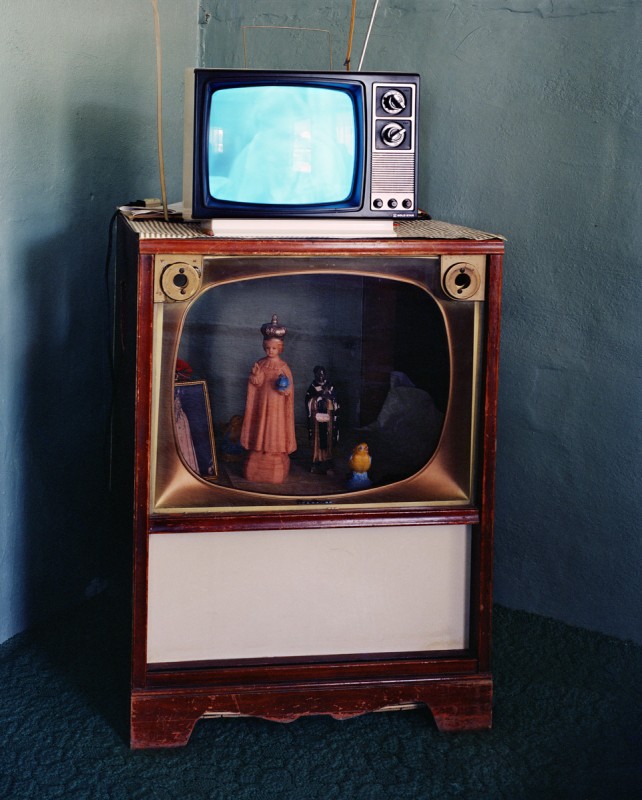
Selected photographs from
RED WHITE BLUE AND GOD BLESS YOU: A PORTRAIT OF NORTHERN NEW MEXICO
For two decades, living in a beautiful and isolated place, among Americans with a distinct language, character, and culture, I have often felt myself an expatriate in my own country.
Many American writers, photographers, and painters decide to leave the familiar in hopes of gaining insight and perspective in another land. Some flee the values and prejudices of provincial America to bask in what seems a more sophisticated foreign light. To harvest their art, others cultivate isolation in a place where responsibilities are few and time for work is ample. For still others, the new country itself is the primary interest. They want to enter and explore it, to render it, to come to know it in every way possible. If they are welcomed, if doors are opened to invite them inside, they may feel so at ease in new rooms, so immersed in another life, that the adopted country begins to look and feel like home, while the country of their birth seems foreign or strange.
Alex Harris, from the introduction to Red White Blue and God Bless You, 1992
Text from Aperture’s 40th Anniversary issue, 1992
Sofia lived in a small adobe house on a dusty back road across the tracks in Las Vegas. When I knocked on her door early one winter morning in 1984, Abelino was still getting dressed. He let me in, promised me coffee, and left me to wait in Sofia’s pale green living room. In one dark corner, a portable, black-and-white television glowed and squawked. Beneath it, Sofia had con-structed a shrine out of the shell of the original family set.
Some company made that big television as a box for transmit-ting stories, and when the box was worn out, its stories were dis-carded and replaced by perhaps the oldest story in the world: one woman’s appeal to God and his saints to watch over her family, to keep them safe. Yet this same woman placed the ulti-mate, profane twentieth century plastic object right there on top of it’s sanctified wooden cousin.
This photograph reveals a leap of faith, a creative human act to place religion at the heart of every-day life. For me this picture also speaks to the luck and fate that twenty years ago led a young man with a camera into what seemed the altogether exotic world of Hispanic northern New Mexico. I lived in that world until my life somehow merged with the lives I photographed, until I became part of the story I am trying to tell. It is an image that extends an old adage, a photograph that declares how fundamental seeing is – not just for artists and photographers, but for all of us. Seeing is believing.
Alex Harris



































